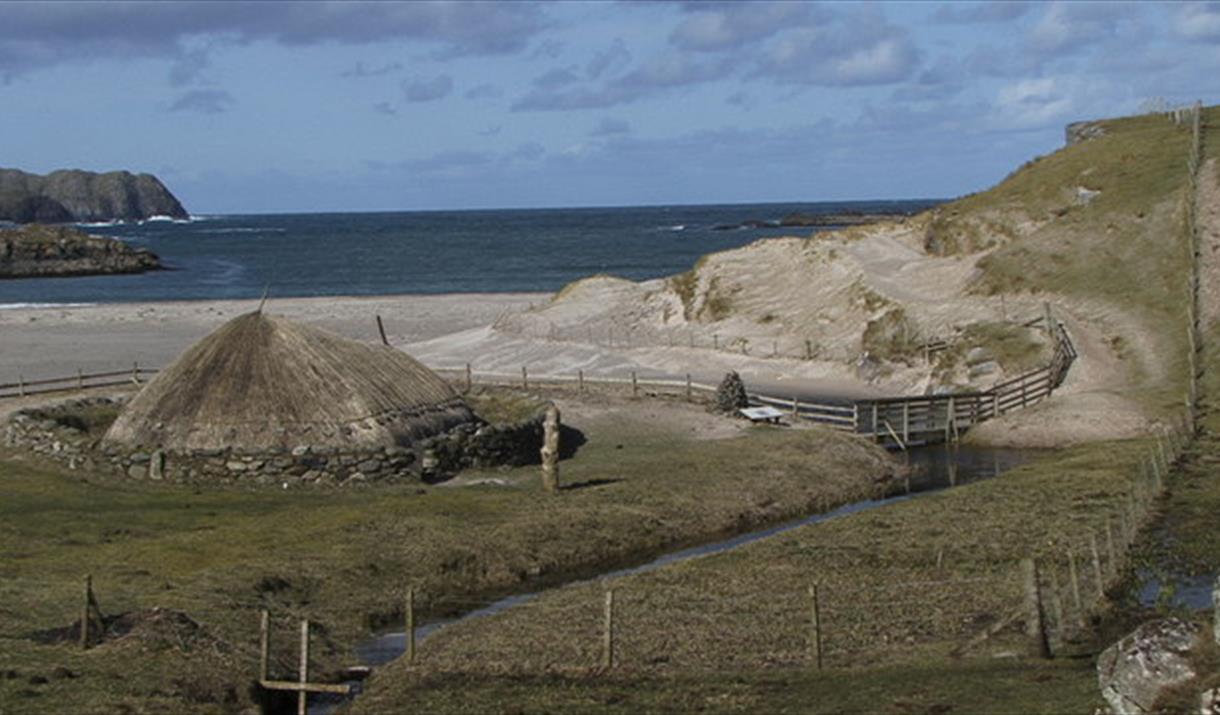To provide you with the best experience, cookies are used on this site. Learn more

To provide you with the best experience, cookies are used on this site. Learn more


In 1992 a severe storm exposed stone walls of an ancient village which had lain hidden under sand dunes at Bosta Beach, (Bostadh means farm in Old Norse). In 1996 the site was excavated to reveal a well-preserved settlement of houses that dated back to the Late Iron Age (or Pictish Age) of 400-800AD. Located in an idyllic, small valley, with streams, a beautiful beach and rich fishing waters, Bosta would have been a perfect home for these early dwellers. The excavation was recorded in detail and a footprint of the village was laid out, however the vulnerable structures themselves could not be preserved due to the process of erosion and sand build up. Again, they lie hidden beneath the sand, however, based on the original buildings, a life-size reconstruction of a period home was made on more secure ground, using the same techniques that were available at the time the original structures were created.
This delightful Iron Age house at Bosta Beach is open to visitors throughout the summer months and the gives fascinating insight into how early settlers lived. More information about the excavations and some of the finds can be seen in the local museum at Breaclete Community Centre.
In later times Bosta was reoccupied until scarcity of fuel forced the village to be abandoned again in 1875. The remains of traditional Black Houses can still be seen.
Adults: £4
Child: £1
| Closed mid September - December (1 May 2026 - 29 Sept 2026) |
|---|
| Open May to September (9 May 2026 - 16 Sept 2026) |
|---|
* Monday to Friday 12 noon to 4pm
Saturday 12 noon to 4pm during June, July and August.
Out of season visits by appointment only.
Bernera museum will open the same as the Iron Age House but not Saturdays.
Traigh Bhostadh is a sheltered shell sand beach at the north end of Great Bernera. The…
Tobson is the village on Great Bernera near the salmon cages where Caitlin, the murdered…
In The Black Loch, Peter May created the Linshader estate, near Lundale (South-West…
The caves of Pabbay, a small island just off Reef, Uig, is the location of a dramatic…
A low growing plant with small white 2 lobed flowers. Found on improved agricultural land…
A broch is an iron-aged drystone hollow-walled structure found only in Scotland. Dun…
Traigh na Beirghe (Reef Beach) is a very long, sweeping, white sand beach in Uig
This is the best preserved and most visited broch in the Outer Hebrides. It occupies a…
New gallery and studio open from June 2023. Open by appoinment most of the time. Closed…
Kirkibost Harbour is where Baile na Mara in The Black Loch is based on. There is a…
Public Art structure by artists Marian Leven and Will Maclean that reflects local,…
Other points of interest on Bernera and the surrounding land include the bridge, standing…